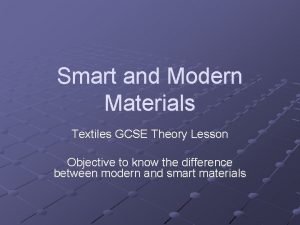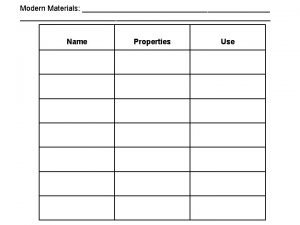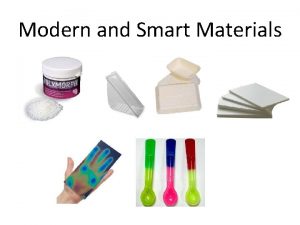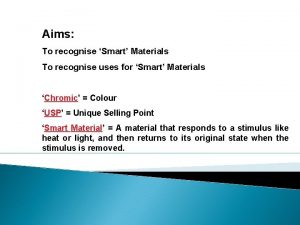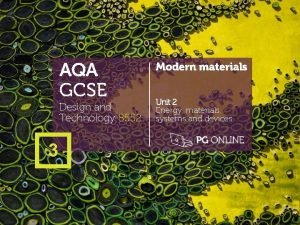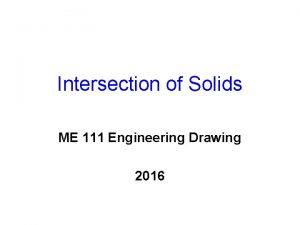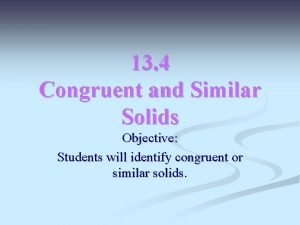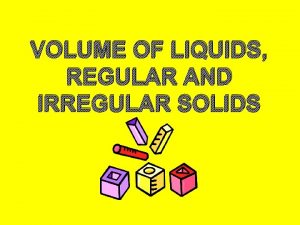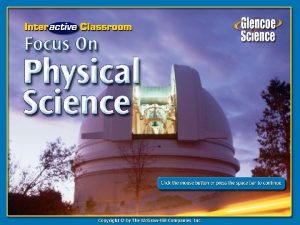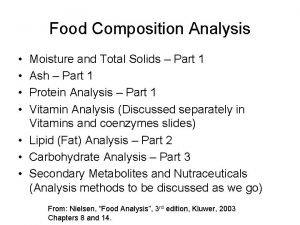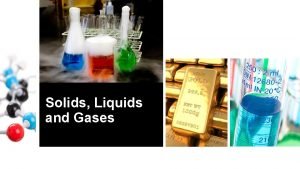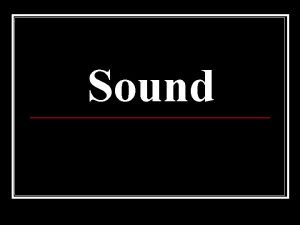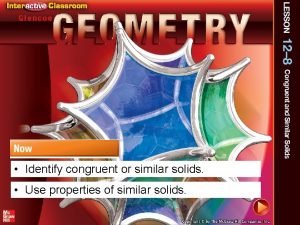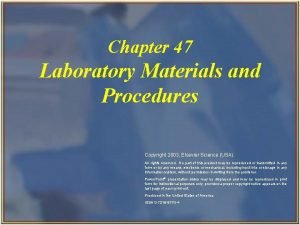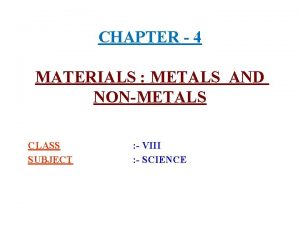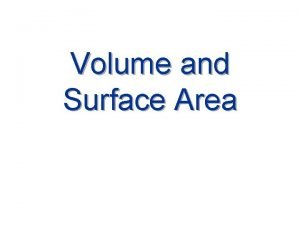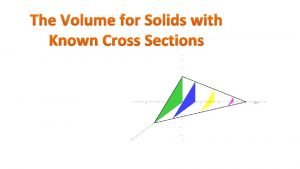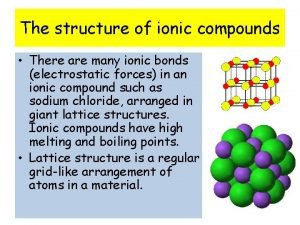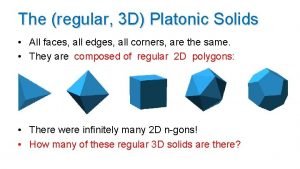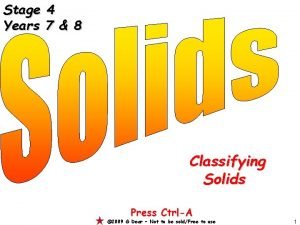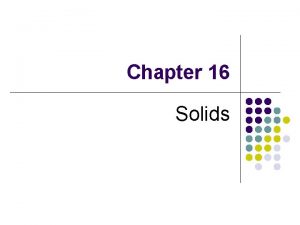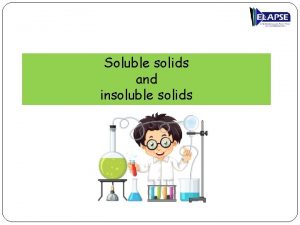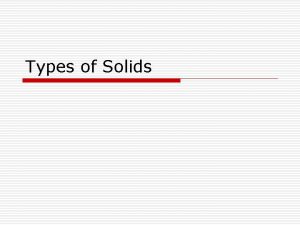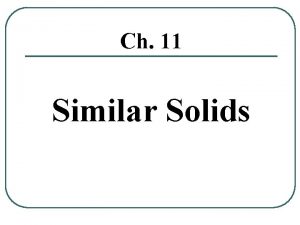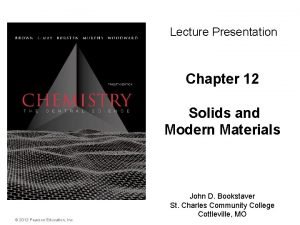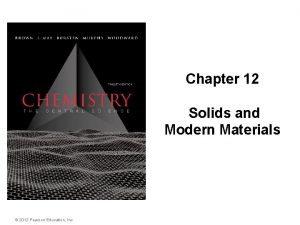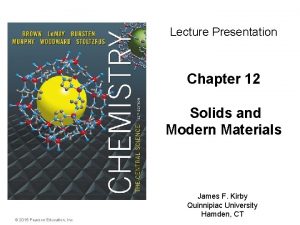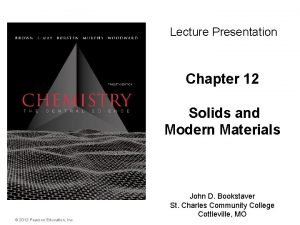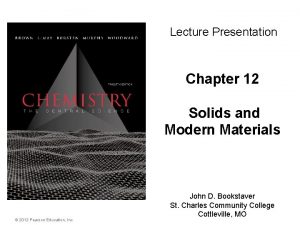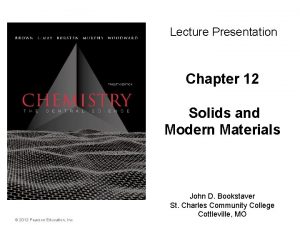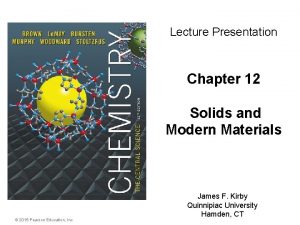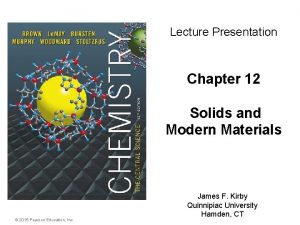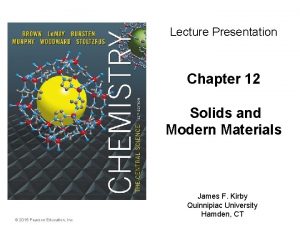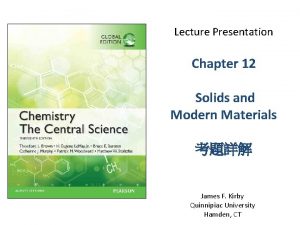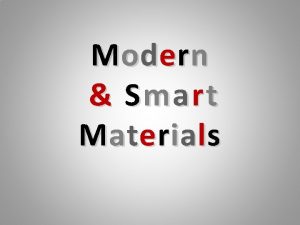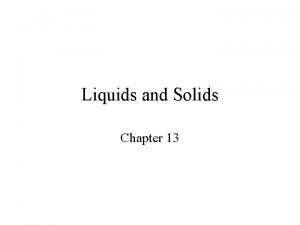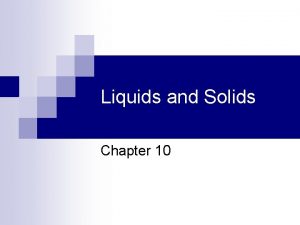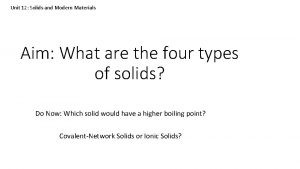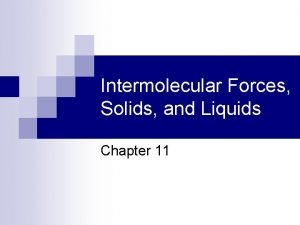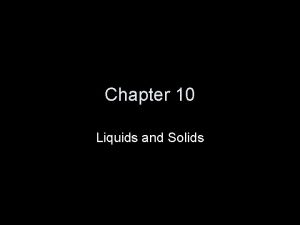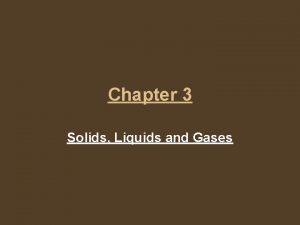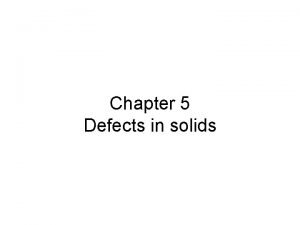Chapter 12 Solids and Modern Materials Outline I



















































- Slides: 51

Chapter 12 Solids and Modern Materials Outline I. III. IV. V. Properties and Types of Solids X-ray Diffraction Units Cells and Structures Band Theory Polymers


What are the different types of solids?

What is X-ray diffraction?

How does X-ray diffraction determine the structure of crystalline solids?



How is the distance between layers in a crystal found?

Example – Bragg Equation Using an x-ray of wavelength 154 pm, a spot is observed at an angle of 17. 5˚. What is the distance between the layer of atoms?

What are some packing patterns?

What are the cubic packing patterns? Hexagonal closest-packed (hcp) Cubic closest-packed (ccp)

What are the crystal structure of metals?

What are some characteristics of units cells?

How do unit cells share atoms?

What are the fundamental types of unit cells?

Simple Cubic Tro, Chemistry: A Molecular Approach 20

Body-Centered Cubic Tro, Chemistry: A Molecular Approach 21

Face-Centered Cubic Tro, Chemistry: A Molecular Approach 22

Face-Centered Cubic

Hexagonal Closest-Packed Structures Tro, Chemistry: A Molecular Approach 24

Example – Units Cells What is the type of unit cell?

Which is cubic closest-packed and hexagonal-closest packed?

Why do sodium atoms fall into octahedral holes?

Ionic Crystals Cs. Cl coordination number = 8 Cs+ = 167 pm Cl─ = 181 pm Tro, Chemistry: A Molecular Approach Na. Cl coordination number = 6 Na+ = 97 pm Cl─ = 181 pm 28

Cesium Chloride Structure • Coordination number = 8 • ⅛ of each Cl─ (184 pm) inside the unit cell • Whole Cs+ (167 pm) inside the unit cell – Cubic hole = hole in simple cubic arrangement of Cl─ ions • Cs: Cl = 1: (8 × ⅛); therefore the formula is Cs. Cl.

Rock Salt Structure • Coordination number = 6 • Cl─ ions (181 pm) in a facecentered cubic arrangement. – ⅛ of each corner Cl─ inside the unit cell – ½ of each face Cl─ inside the unit cell • Na+ (97 pm) in holes between Cl─ – Octahedral holes – 1 in center of unit cell – 1 whole particle in every octahedral hole – ¼ of each edge Na+ inside the unit cell • Na: Cl = (¼ × 12) + 1: (⅛ × 8) + (½ × 6) = 4: 4 = 1: 1 • Therefore, the formula is Na. Cl.

Zinc Blende Structure • Coordination number = 4 • S 2─ ions (184 pm) in a face-centered cubic arrangement – ⅛ of each corner S 2─ inside the unit cell – ½ of each face S 2─ inside the unit cell • Each Zn 2+ (74 pm) in holes between S 2─ – Tetrahedral holes – 1 whole particle in ½ the holes • Zn: S = (4 × 1) : (⅛ × 8) + (½ × 6) = 4: 4 = 1: 1 • Therefore, the formula is Zn. S.

Fluorite Structure • Coordination number = 4 • Ca 2+ ions (99 pm) in a face-centered cubic arrangement – ⅛ of each corner Ca 2+ inside the unit cell – ½ of each face Ca 2+ inside the unit cell • Each F─ (133 pm) in holes between Ca 2+ – Tetrahedral holes – 1 whole particle in all the holes • Ca: F = (⅛ × 8) + (½ × 6): (8 × 1) = 4: 8 = 1: 2 • Therefore, the formula is Ca. F 2. – Fluorite structure common for 1: 2 ratio. • Usually get the antifluorite structure when the cation: anion ratio is 2: 1 – The anions occupy the lattice sites, and the cations occupy the tetrahedral holes.

What are lattice holes?


Example – Unit Cells The atomic radius of copper is 128 pm, and its density is 8. 92 g/cm 3. Is it close packed?

Example – Unit Cells Sodium metal has a density of 0. 970 g/cm 3 and forms a body centered lattice. a) Calculate the length in pm of the edge of the unit cell. b) What is the atomic radius of sodium?

What are the properties of diamonds? • very high melting, ~3800°C – need to overcome some covalent bonds • very rigid – due to the directionality of the covalent bonds • very hard – due to the strong covalent bonds holding the atoms in position – used as abrasives • electrical insulator • thermal conductor – best known • chemically very nonreactive Tro, Chemistry: A Molecular Approach 38

What are the properties of graphite? • hexagonal crystals • high melting, ~3800°C – need to overcome some covalent bonding • slippery feel – because there are only dispersion forces holding the sheets together, they can slide past each other • glide planes – lubricants • electrical conductor – parallel to sheets • thermal insulator • chemically very nonreactive Tro, Chemistry: A Molecular Approach 39

What are the allotropes of carbon? Fullerene

What are the properties of buckministerfullerenes and nanotubes? • Form of carbon, discovered in 1980 s • Occurs as soccer-ball-shaped clusters of 60 carbon atoms (C 60). • Called fullerenes, or bucky balls • Nanotubes—sheets of interconnected C 6 rings that assume the shape of a cylinder – Single-walled tubes—one layer of interconnected rings – Multiwalled tubes—concentric layers of interconnected rings

What is a silicate?

What is the structure of quartz?

How are ceramics made? Kaolinite Chrysotile

What are some applications of ceramics?

What are some applications of glass?

How does molecular orbital theory relate to metallic bonding?

What happens to the orbitals of metals?

How does the band gap affect conduction?

How does molecular orbital theory relate to metallic bonding?

Why are metals good conductors?


What are n-type and p-type semiconductors?

What are monomers and polymers?

What is polymerization?

 Lesson outline lesson 1 solids liquids and gases answer key
Lesson outline lesson 1 solids liquids and gases answer key Quotation sandwich examples
Quotation sandwich examples Natural materials
Natural materials All household materials are useful
All household materials are useful Natural materials and man made materials
Natural materials and man made materials What is adopting materials
What is adopting materials Effects of light on smart and modern materials
Effects of light on smart and modern materials What is the difference between smart and modern materials
What is the difference between smart and modern materials Properties of modern materials
Properties of modern materials Modern and smart materials
Modern and smart materials Difference between smart and modern materials
Difference between smart and modern materials Chapter 14 solids liquids and gases worksheet answers
Chapter 14 solids liquids and gases worksheet answers Kinetic molecular theory of liquids and solids
Kinetic molecular theory of liquids and solids Chapter 11 - states of matter: liquids and solids
Chapter 11 - states of matter: liquids and solids Direct materials budget with multiple materials
Direct materials budget with multiple materials Unit 2 energy materials systems and devices
Unit 2 energy materials systems and devices Thermal expansion and contraction examples
Thermal expansion and contraction examples Solids liquids and gases section 2 properties of fluids
Solids liquids and gases section 2 properties of fluids Properties of solids and liquids
Properties of solids and liquids Venn diagram for solids liquids and gases
Venn diagram for solids liquids and gases Solid liquid and gas particles
Solid liquid and gas particles Interpenetration of solids in engineering drawing
Interpenetration of solids in engineering drawing Process of liquid to gas
Process of liquid to gas 12-8 congruent and similar solids
12-8 congruent and similar solids Two similar solids a and b are shown
Two similar solids a and b are shown Regular and irregular solids
Regular and irregular solids Kinetic molecular theory of liquids and solids
Kinetic molecular theory of liquids and solids Liquids and solids menu
Liquids and solids menu Superplasticity
Superplasticity Paediatric chalk mixture bp
Paediatric chalk mixture bp Moisture and total solids analysis
Moisture and total solids analysis Method of preparation of pharmaceutical suspension pdf
Method of preparation of pharmaceutical suspension pdf Liquids and solids
Liquids and solids Bonds and bands in solids
Bonds and bands in solids Indiffusible suspension
Indiffusible suspension Red liquid element
Red liquid element How does sound travel through solids liquids and gases
How does sound travel through solids liquids and gases Congruent solids
Congruent solids Cone volume ratio
Cone volume ratio Liquid information
Liquid information Motion of particles in solids, liquids and gases
Motion of particles in solids, liquids and gases Chapter 47 laboratory materials and procedures
Chapter 47 laboratory materials and procedures Chapter 4 materials metals and nonmetals
Chapter 4 materials metals and nonmetals Surface area of solids
Surface area of solids Cyanmethemoglobin method
Cyanmethemoglobin method What are two types of solids
What are two types of solids Types of solids
Types of solids Solids facts
Solids facts Volumes of solids with known cross sections
Volumes of solids with known cross sections Brittle compounds
Brittle compounds Platonic solids 4d
Platonic solids 4d Classifying solids
Classifying solids







